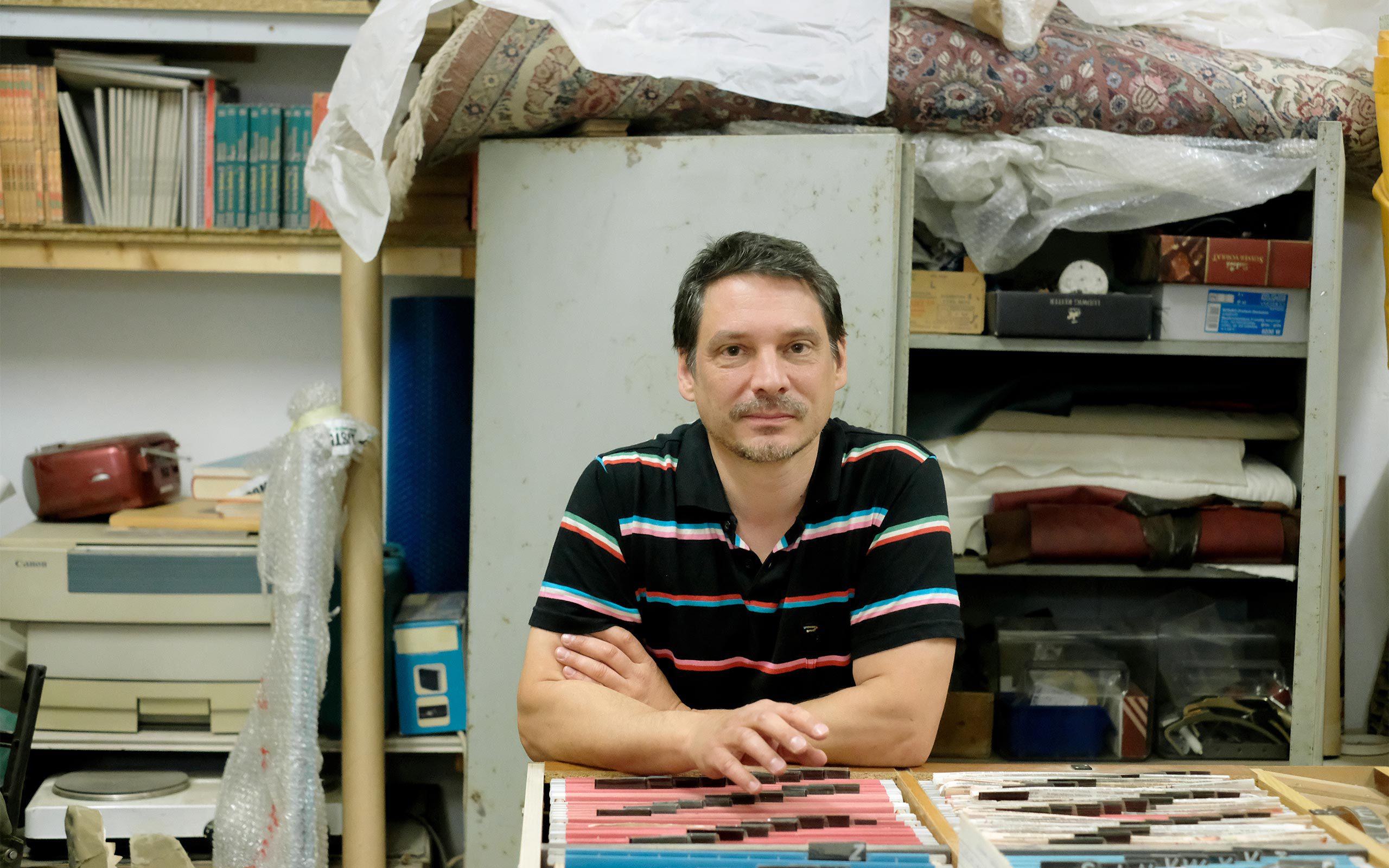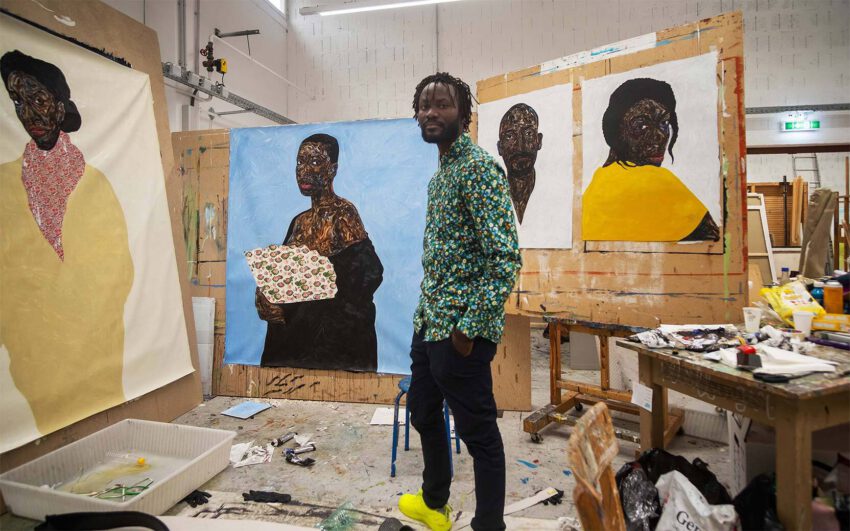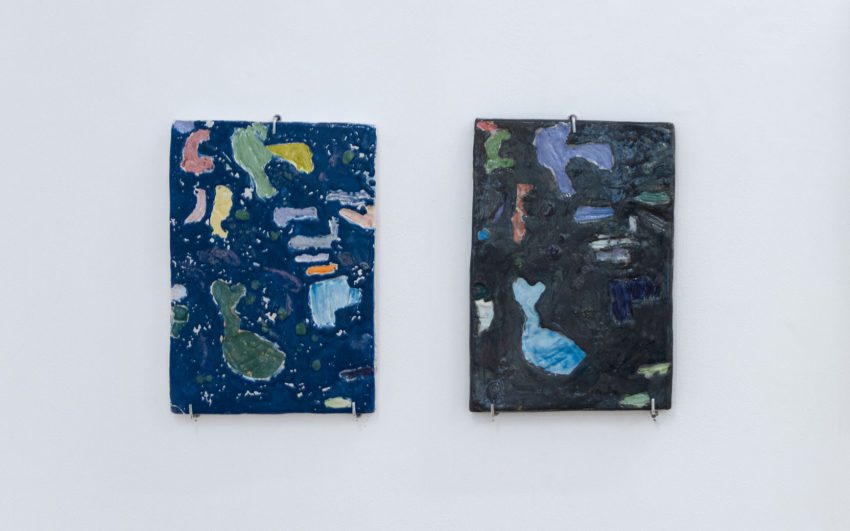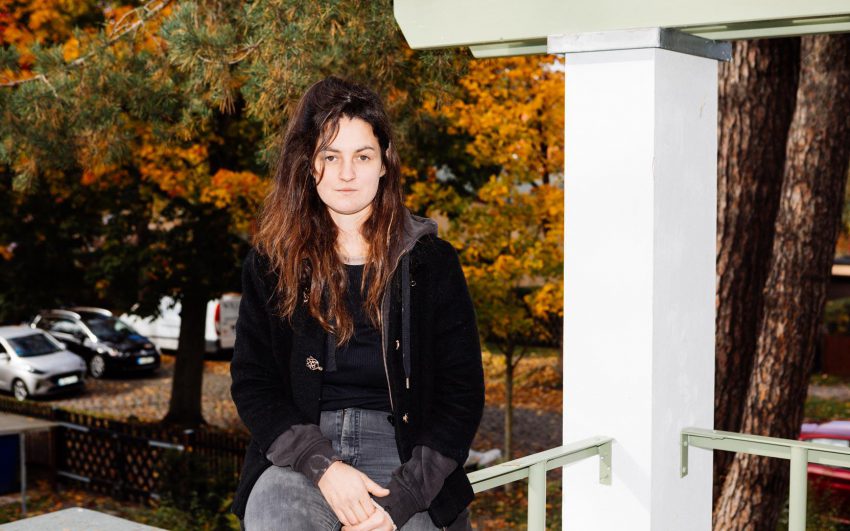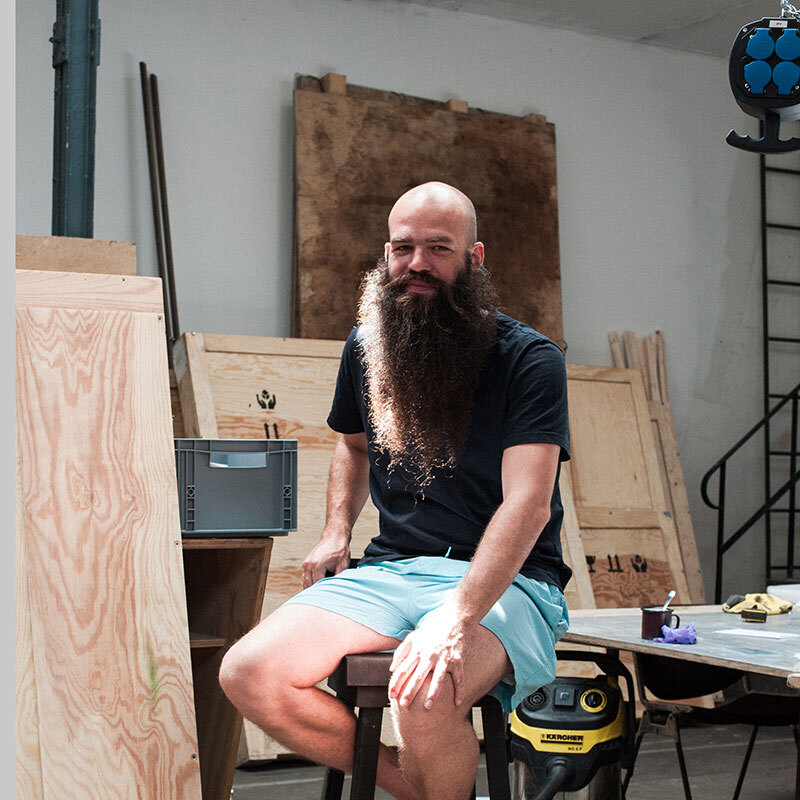Viennese artist Fabian Seiz creates art from materials that others may not deem worthy of consideration. In his hands parts of everyday objects, old wood and, more recently, his own early works are turned into skillfully conceived sculptures. Fabian speaks with us about his work cycle, the memory and the democratic charm of used materials.
A big theme in your work is what remains when time has passed, in other words: memory. What is your earliest memory?
The earliest? I think, I am lying in a crib in the room I shared with my sister and I had just woken up. I can still see the bars of the cot in front of me. However, I can’t remember how the day progressed after that point. This image alone has imprinted itself on my memory, nothing else; I am actually quite a forgetful person.
In your art the processing of what has been experienced is a favored procedure. Can you explain why it is such an important source of inspiration for you?
It is about organizing. Memory is constantly changing because it is something that you create yourself. My memories of ten years ago are certainly different from those I have today. I have created a work with the title Biography for which I organized chronologically all the first names that I could recall, of people I have known, and cross-referenced them with the names of those through whom I knew them. This took me approximately ten years during which my memory had certainly changed again. When I look at the work now, I have to renew my memory of who this person actually was at the time.
The action of organizing seems to be an important method of your work. What is the fascination of sorting diffuse masses of memories for you?
Apparently organizing is part of my nature. There is something hierarchical about it, because one certainly omits or stresses things. Something is first and something is last, and something disappears altogether. You can see in my studio that I like to keep order, although there is actually a chaos phase right now! I regularly clear out things and optimize the order – especially because one has a storage problem with sculptures. At the same time, I don’t do much with this optimization mania. If things are too perfect, it becomes stuffy.
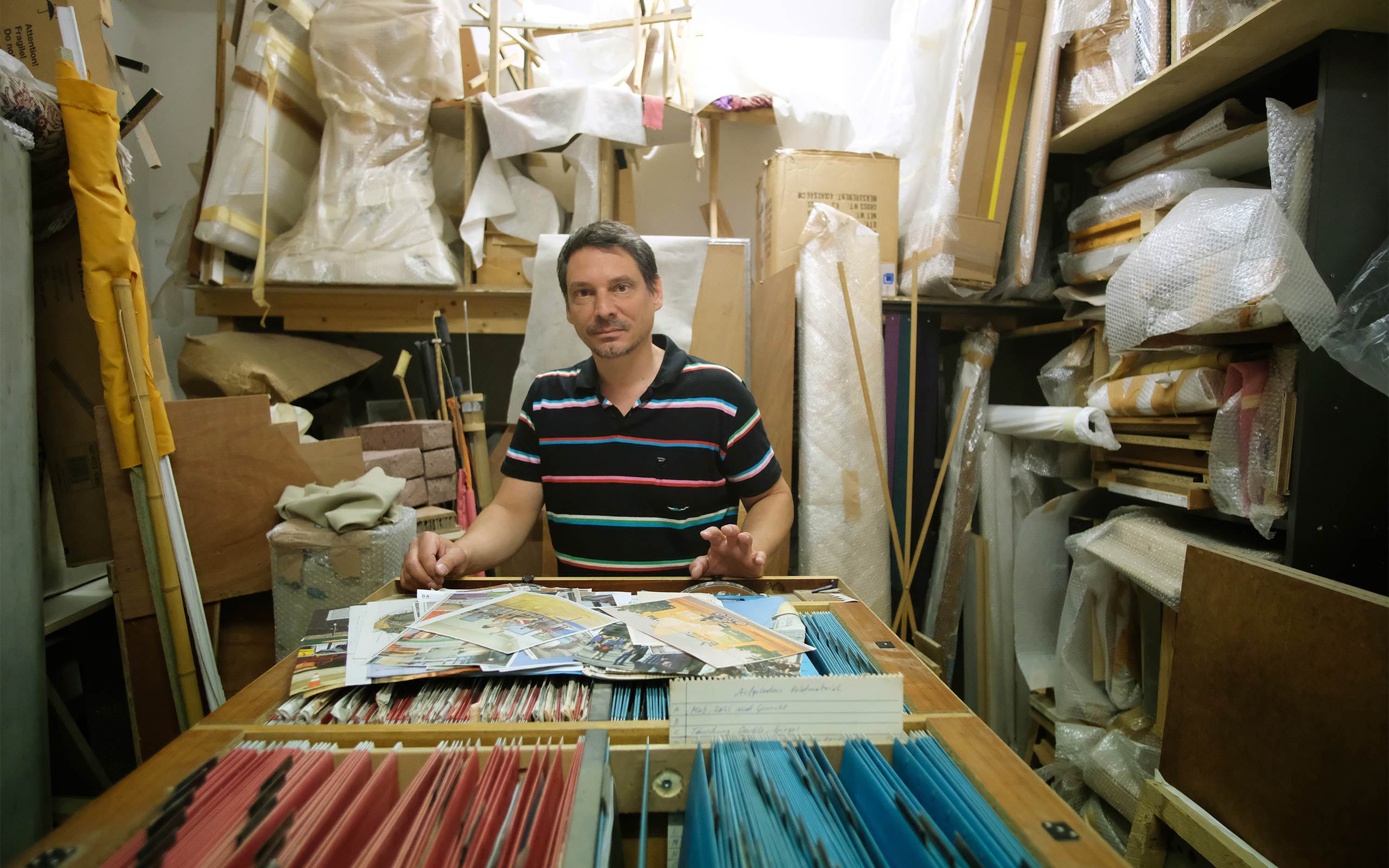
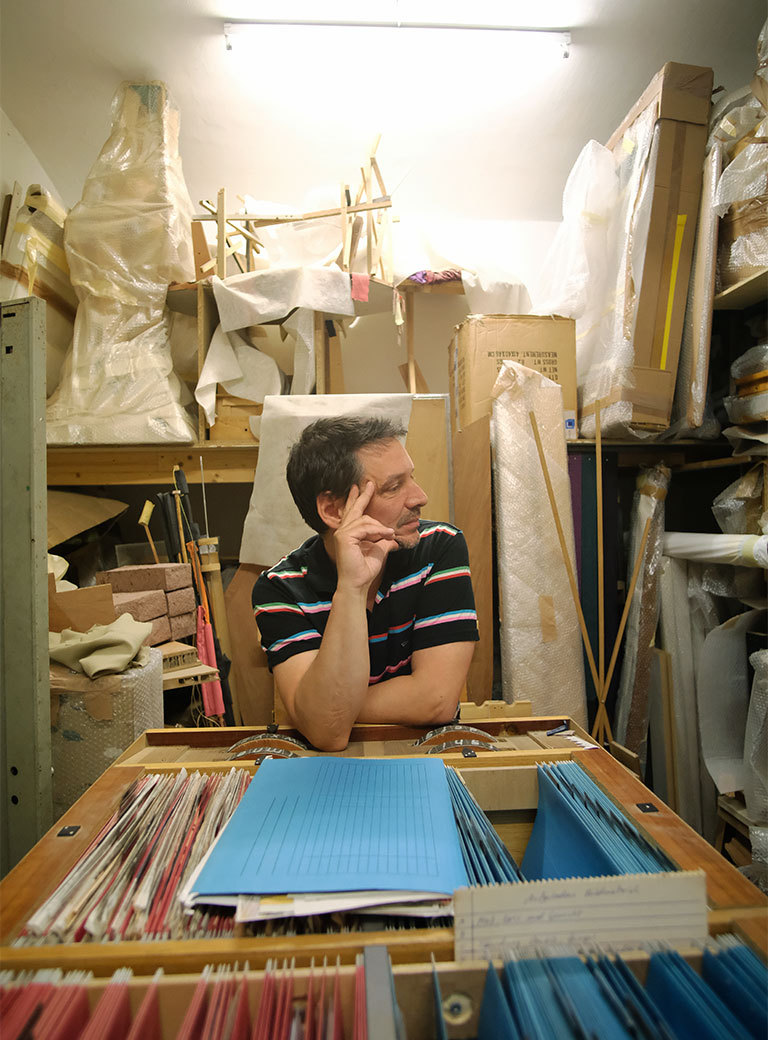
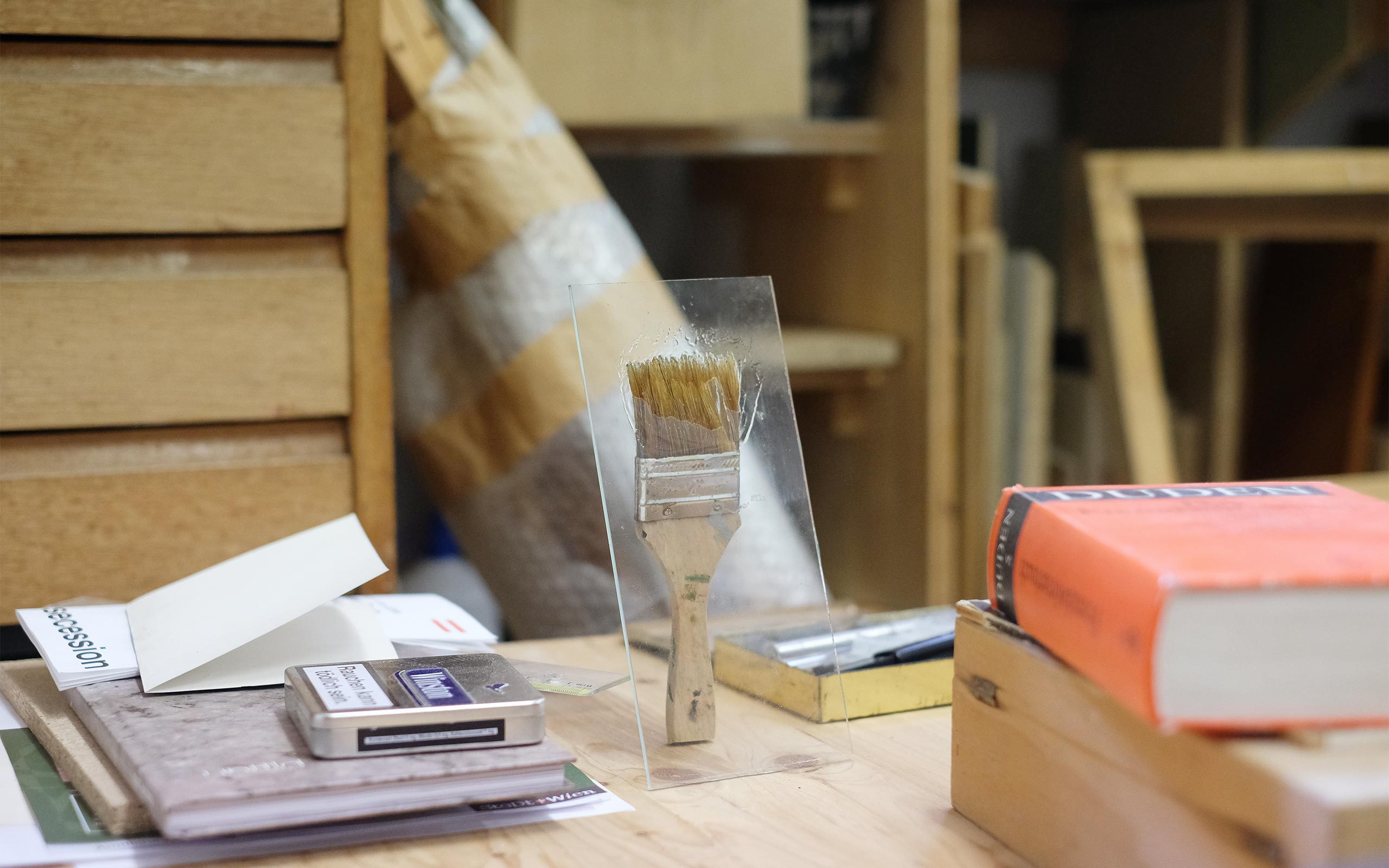
Could one actually see your studio and storage as a kind of external memory?
The space functions like a machine. Through the structure that I have created, my studio functions like a prosthesis for me. I know which spaces are best suited for what, and in the stored materials one can see traces of memory. In my studio I also have my art machine. The idea is that a work of art consists of form and content. The collection of forms is subdivided in terms of aesthetics and materials. On the content page there are texts and images that transport content. A self-built random generator determines the ingredients of a work. I think there are over 456,000 possible combinations – more than enough for my entire career. I have been filling my art machine for seven years now. It is something like my outsourced brain and many works have been created from it, in addition, it has also been conceived as a sculpture.
Does that mean that you consider the storage space of your works as an active part of your artistic practice?
For some years, deconstructing and rebuilding has been a big theme in my work. I have already produced three-dimensionally my early graphic work using papier-mâché. The next step is to do something similar with my three-dimensional work. I still have to find the right solution for how to implement this well and therefore I go quite often to the storage space. And there are a series of remakes where I have improved the works to the point where I have created an improved version of an old work and make the original disappear. I use my sculptures like materials or tools. When I dismantle a piece of sculpture its parts reappear in my material collection. In this way, themes reappear.
If you handle your work like that, is it not difficult to tell when a work is actually finished?
A work is finished when the idea has been formulated and a form been found. The form is to realize many parts of the idea, yet I don't want to spell out everything completely, some aspects should remain open. But how I will see a complete work a few years later is quite a different question. I review my sculptures cyclically rebuilding, improving, or reworking in a different way. Sometimes something breaks and I exchange it.
Did you gain insights about yourself in this radical exploration of your own artistic past?
Mainly that there seem to be topics that have been with me for a long time, that I keep forgetting and that then reappear. In fact, I have discovered the same idea in two different sketchbooks between which lay a period of some years.
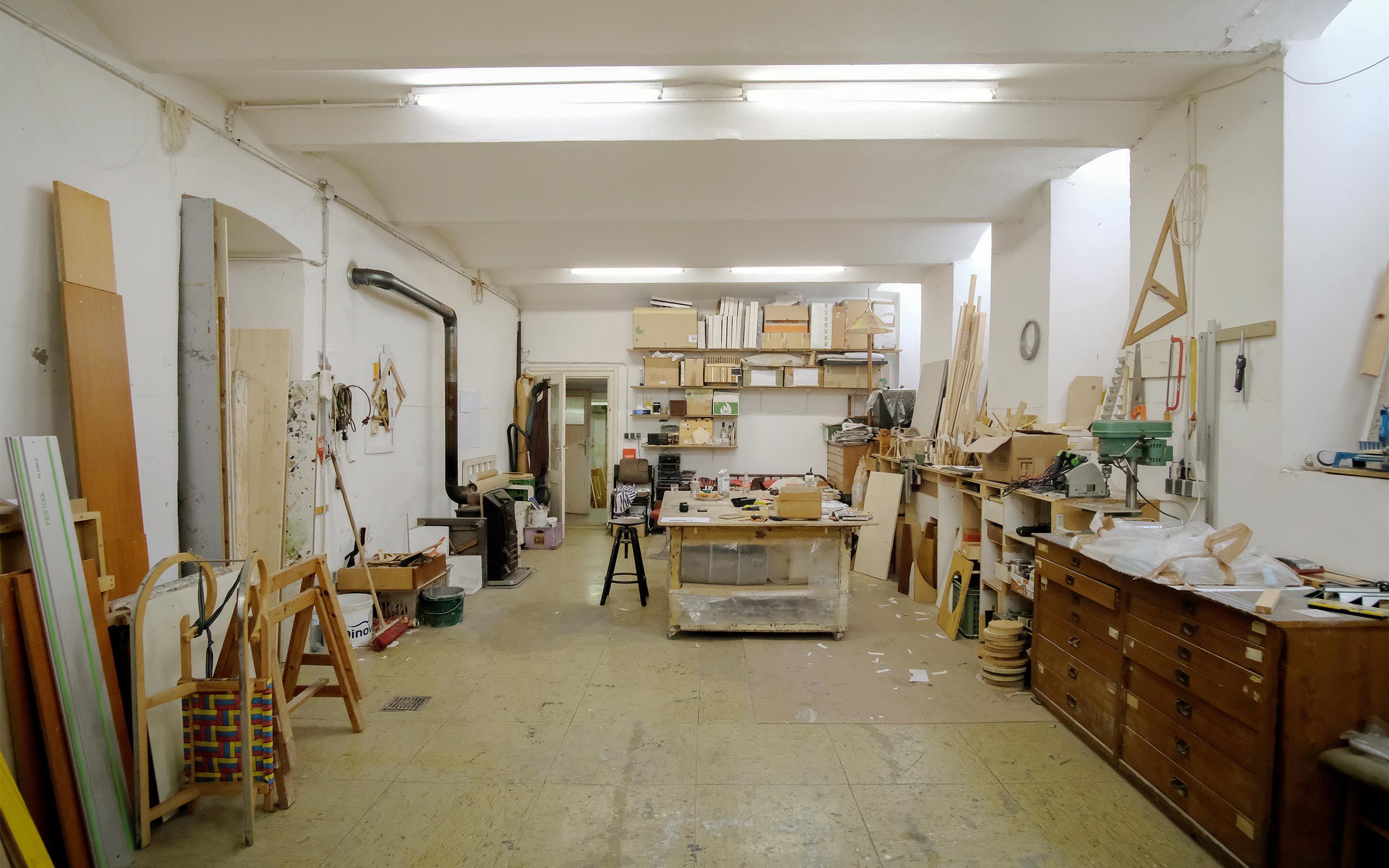
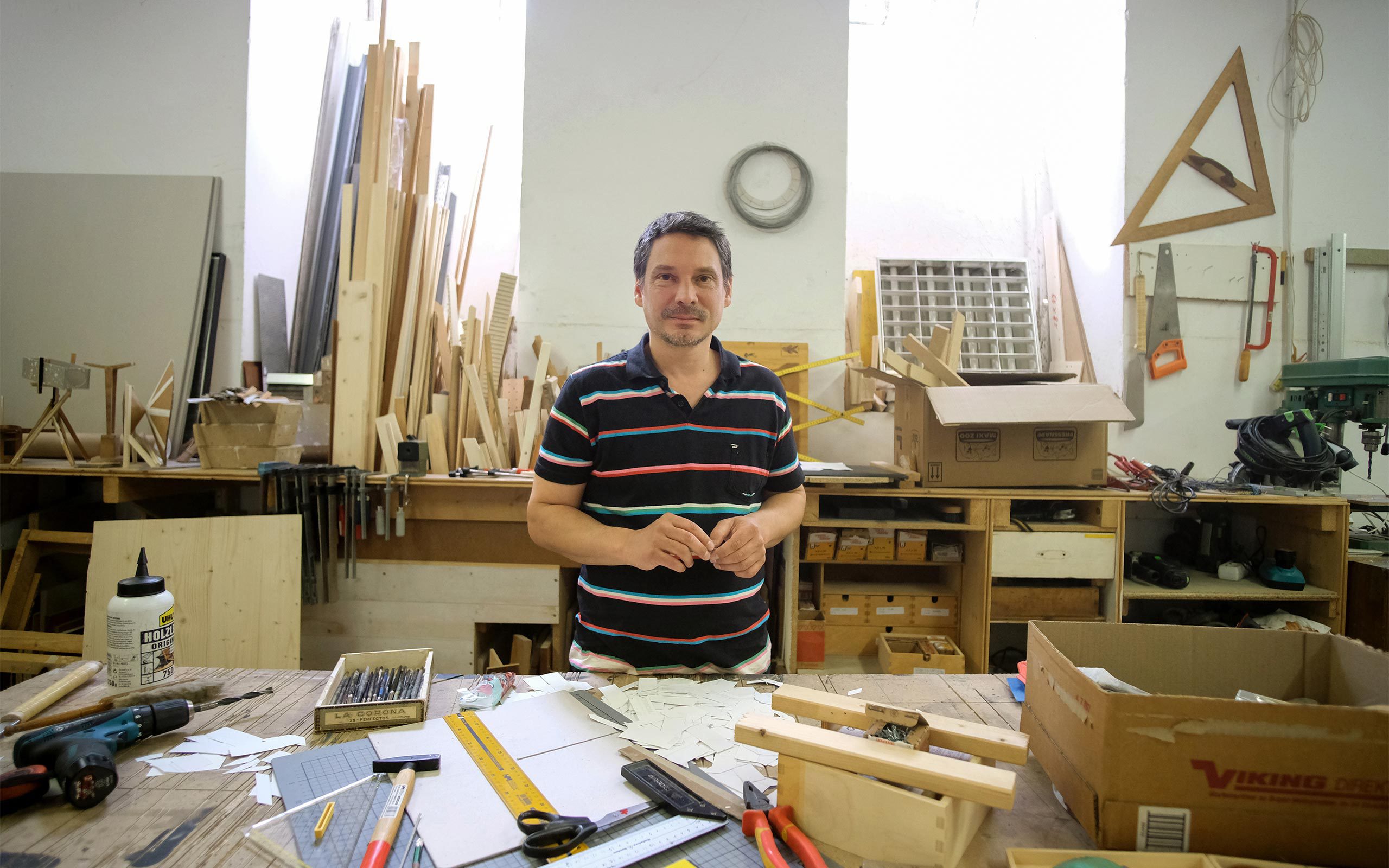
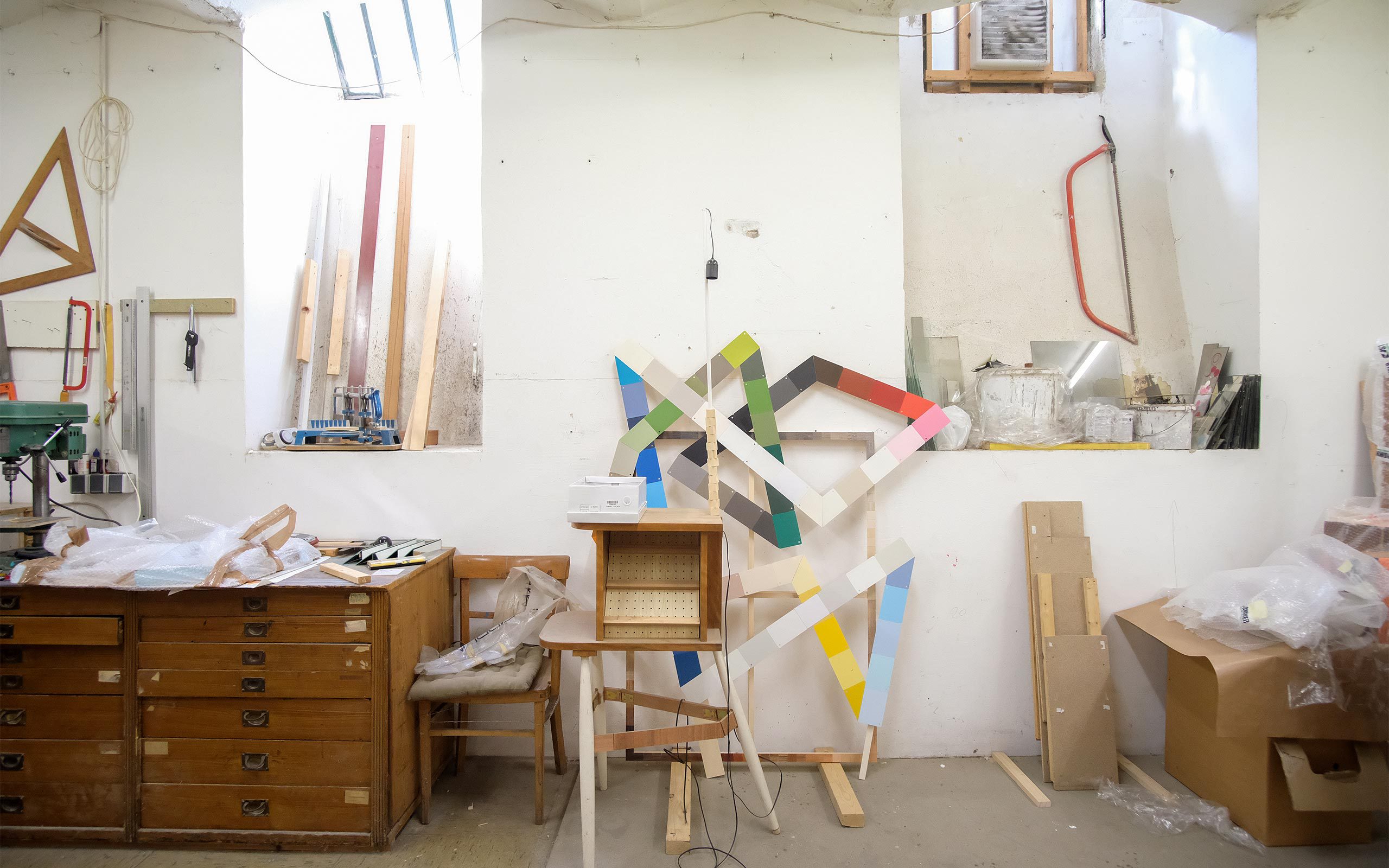
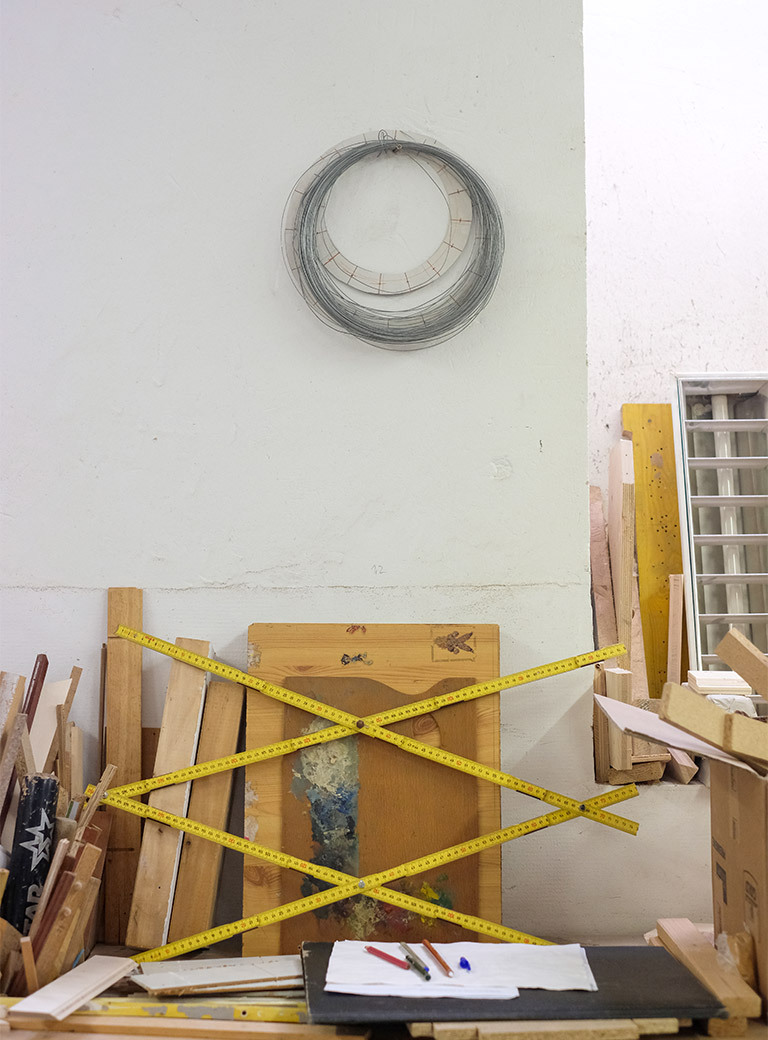
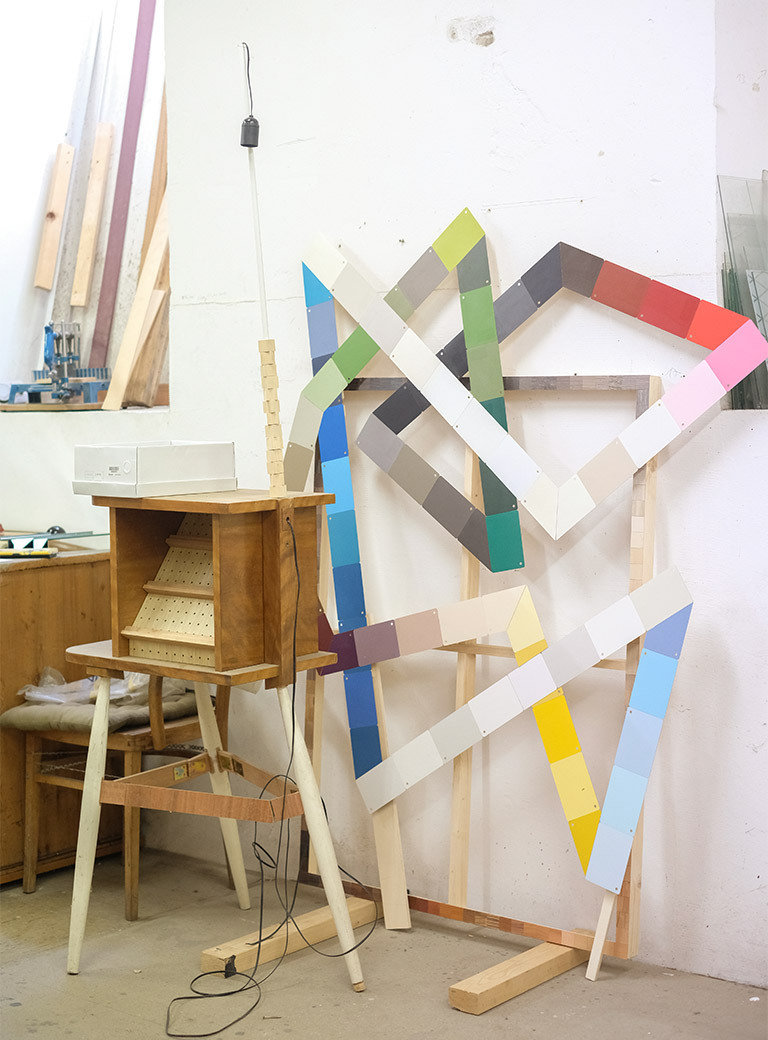
Do you usually learn something about life from your work, or is it rather that you bring themes from your life into your art? The latter is rather the case. Everything that interests me is reflected in my work. Everything in my art comes from the outside and not from myself. Often it is initiated by reading: a lot of what I read then becomes a sculpture. For me, the content of my sculptures is obvious and then it becomes obvious that this is not the case for everyone. Then texts and even titles are quite helpful. But it's not like there's a flyer attached to every job.
Can you tell us in a few sentences what you want to trigger in people who view your art? What is the content you wish to convey?
Everything that has a form reflects the spirit of a certain time. Everything that surrounds us has content: How is it produced? Why does it have this particular design? What frame of mind is revealed? All ideas can be seen in the form. I play with that. How that looks concretely varies from sculpture to sculpture. Here you see the Column for the Common. The checkered pouches that I have used are available worldwide, yet are without a brand name/yet lack a brand name. The “rollkasten” I used, was also a mass production at the time. The sculpture informs viewers about mass produced items which do not have brand identification, and which everyone recognizes, yet which will nevertheless disappear. I wanted to create a monument to these objects. And when one sees that, one can begin to reflect on mass production, global trade, and so on.
One of the concepts that has deeply fascinated you is the so-called potlatch. What is it about?
It is a gift and destruction ritual among the indigenous peoples of the Pacific Northwest coast of both Canada and the United States. It involves giving away as gifts and/or destroying valuable possessions in order to demonstrate wealth and prestige. That can be very difficult economically because the participants destroyed almost all of their seeding material or even killed their slaves. Eventually, the potlatch was banned. One can't do good business with people who have such a concept of economics. The French philosopher Georges Bataille calls it the expenditure of nature. Nature is never stingy, but gives everything.
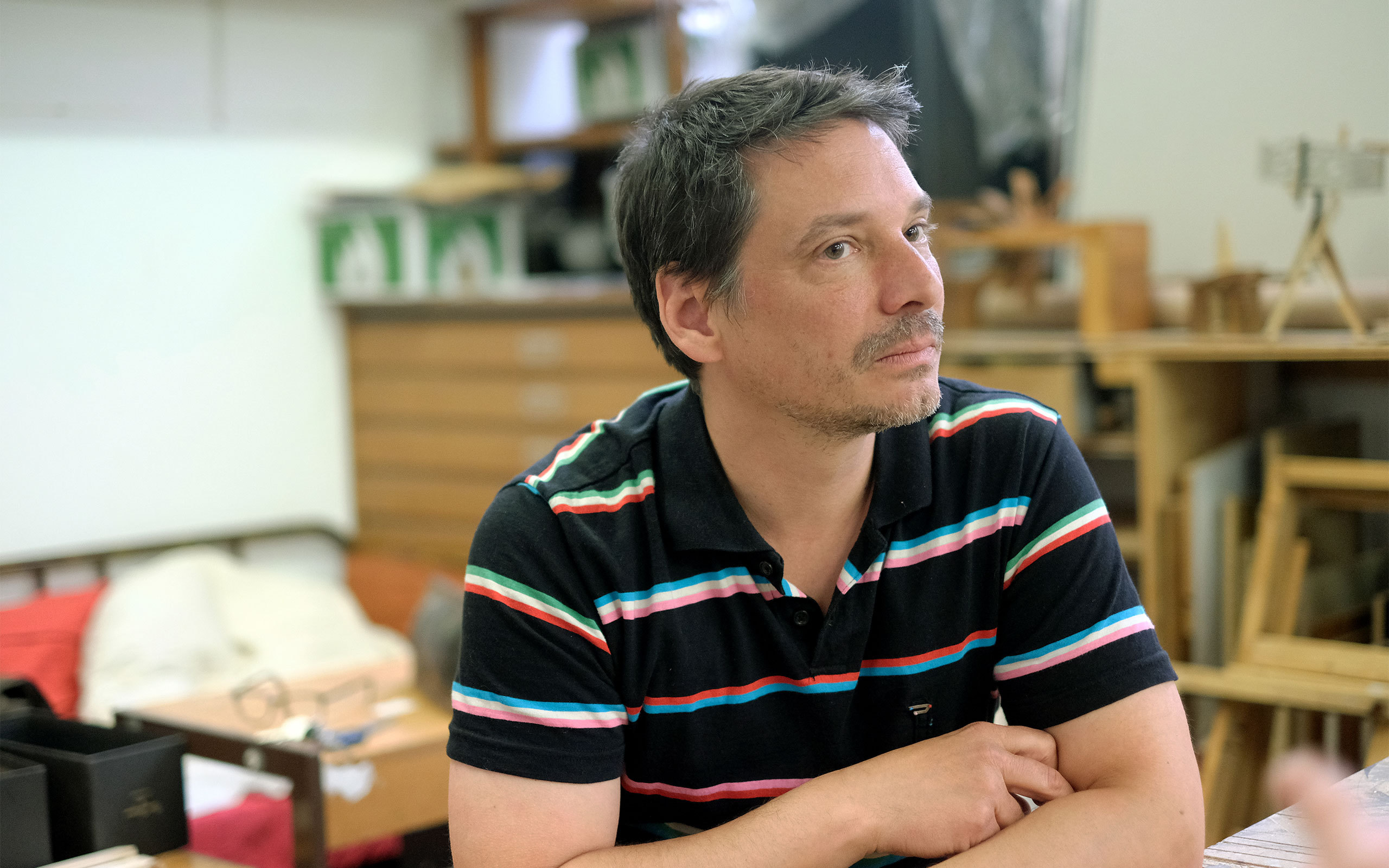
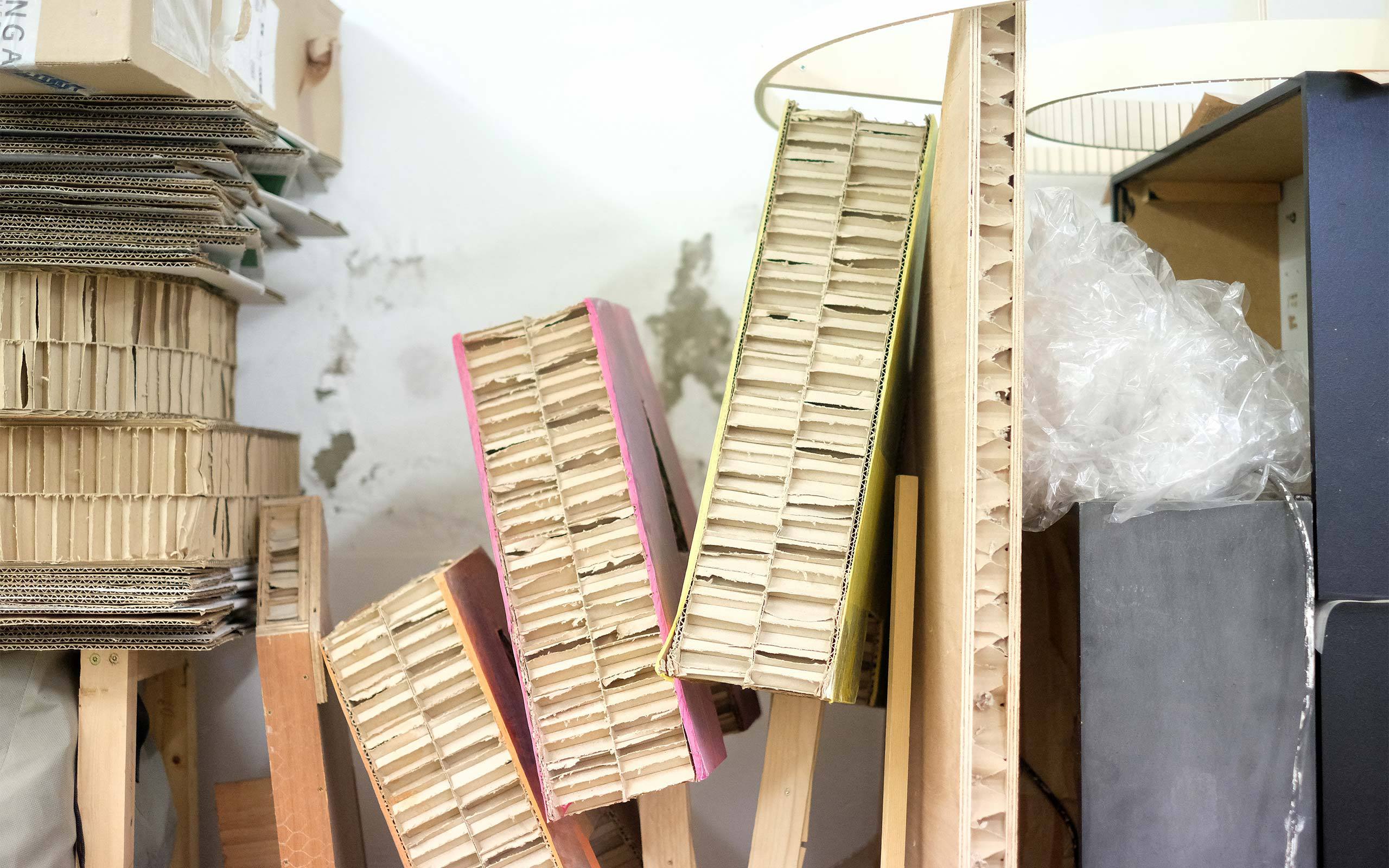
Are the technical and aesthetic conditions of your work a result of this approach to work?
This is stricter and more reflected than one would believe at first glance. Regarding the works dealing with the issue of bricks for example, which I create with papier mâché made of my old drawings, everything has to comply with the brick size standard, which is almost obsessive. I am more interested in the information I find in reused materials than how it looks in the end. The 200 drawings which I can compress onto a small piece of papier-mâché, have vanished, but are somehow still there as information.
What motivates you to keep working with used material in your art?
When I use old pressboard, I am interested in the fact that this is a material and an aesthetic everyone knows from their home. It is actually a very familiar material that has been rebuilt into a sculpture but has a very different appearance. And it's also about availability. In the past, more furniture was discarded on the street. By examining the type of veneer used one could recognize the level of quality of the furniture being thrown away, one can read a lot from it. That's why, when I am faced with the choice between elite and democratic material, I always choose democratic material. For the art machine, too, I use only newsprint quality paper, that is, a material that is actually available to everyone, in the form of daily newspapers.
Do you choose this democratic material with the intention to make your art more accessible?
As far as I know, my sculptures appear accessible. I have heard that from many quarters. My intention is to show, that it is possible to create art from these materials from which anyone can make something. In my works there is nothing that excludes anyone, it is there for everyone.
Have you always realized that art is your way of expressing these things? Or were there other options for you?
It was a very direct path. At the age of 14, I decided to become an artist and I set myself the goal of studying at the academy. Why exactly that came to my mind then, I do not remember. However, that’s what I did and I put everything else – school and all this – aside. At the age of 18, I actually studied at the academy, I wouldn’t have known what else to do.
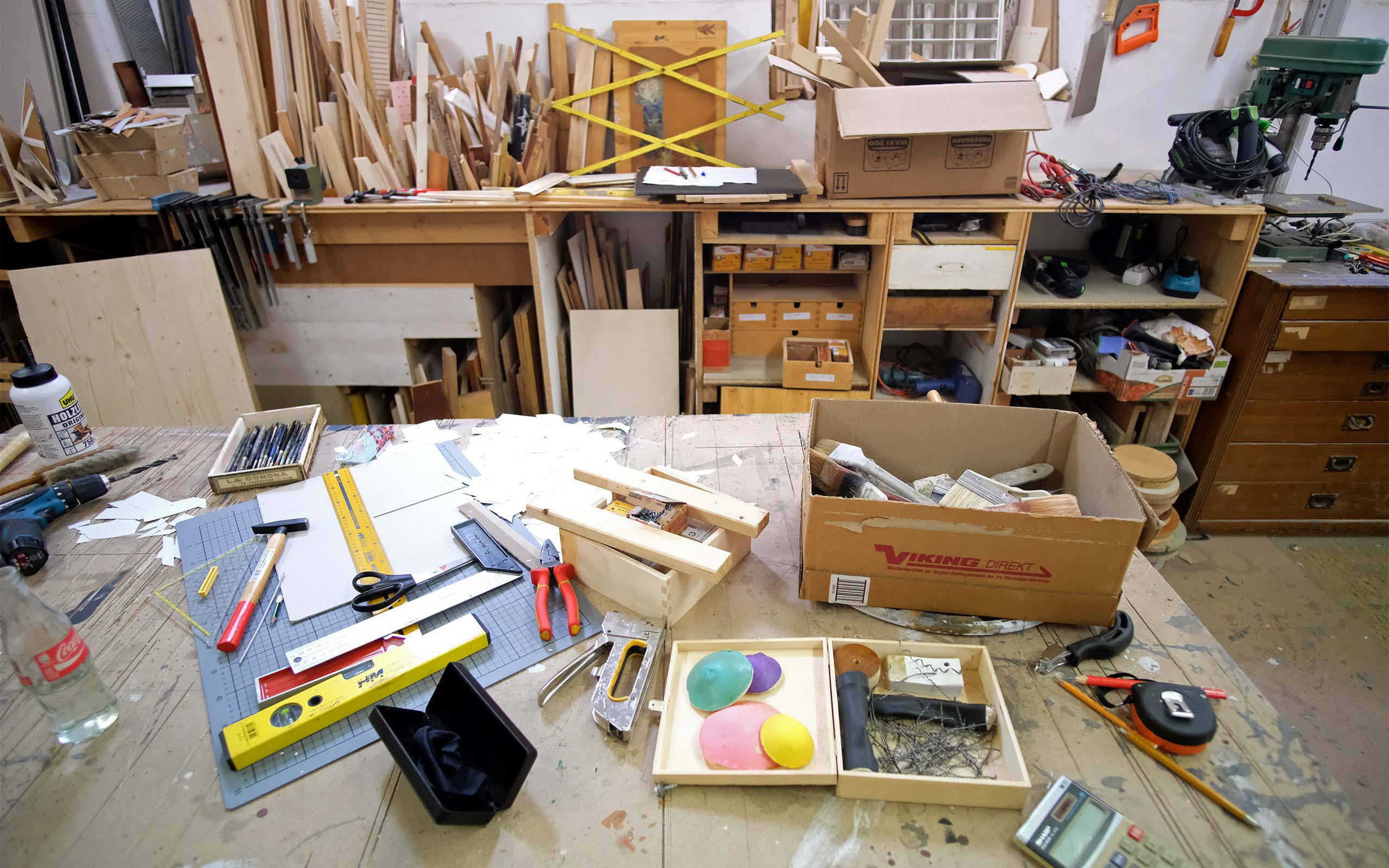
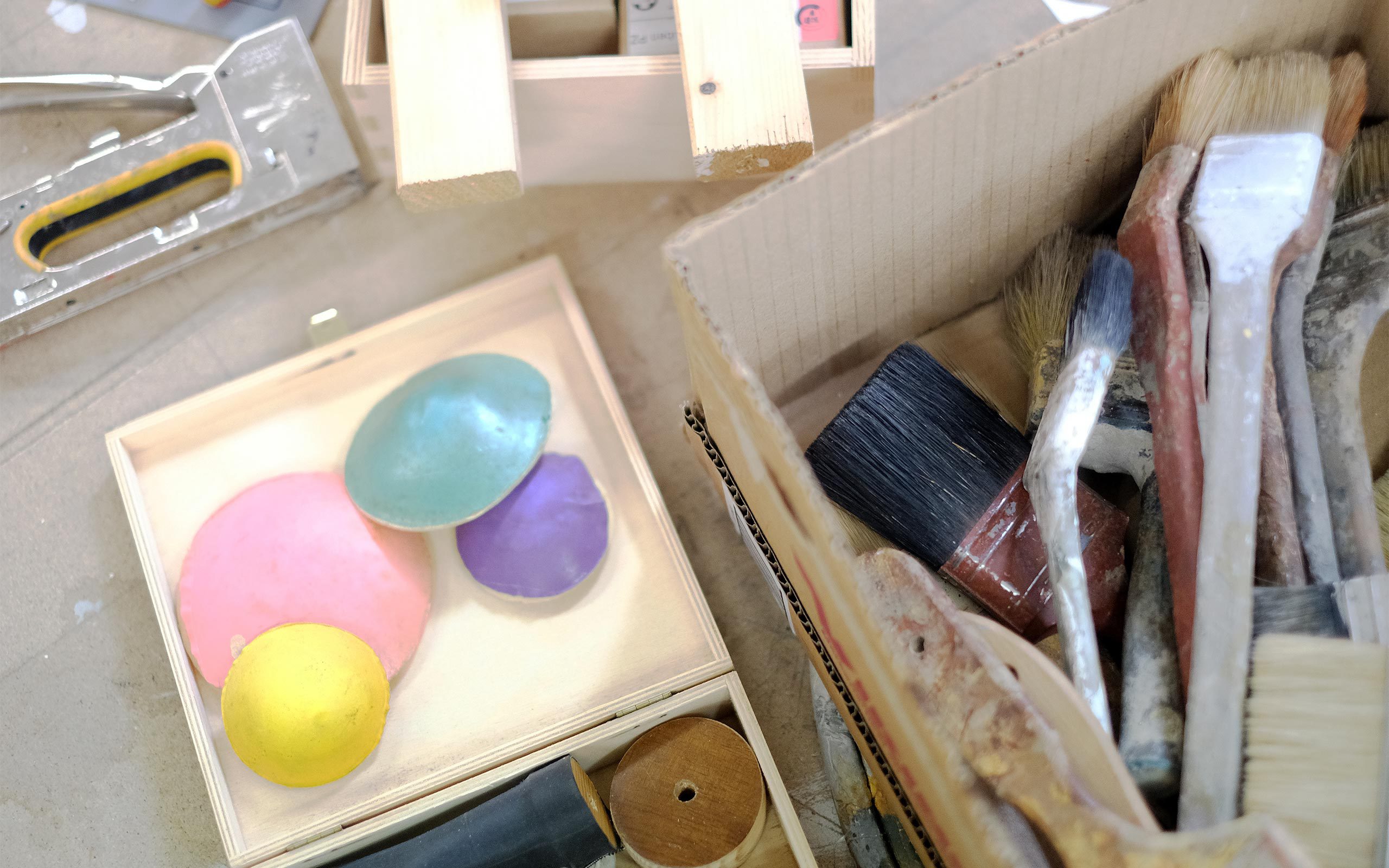
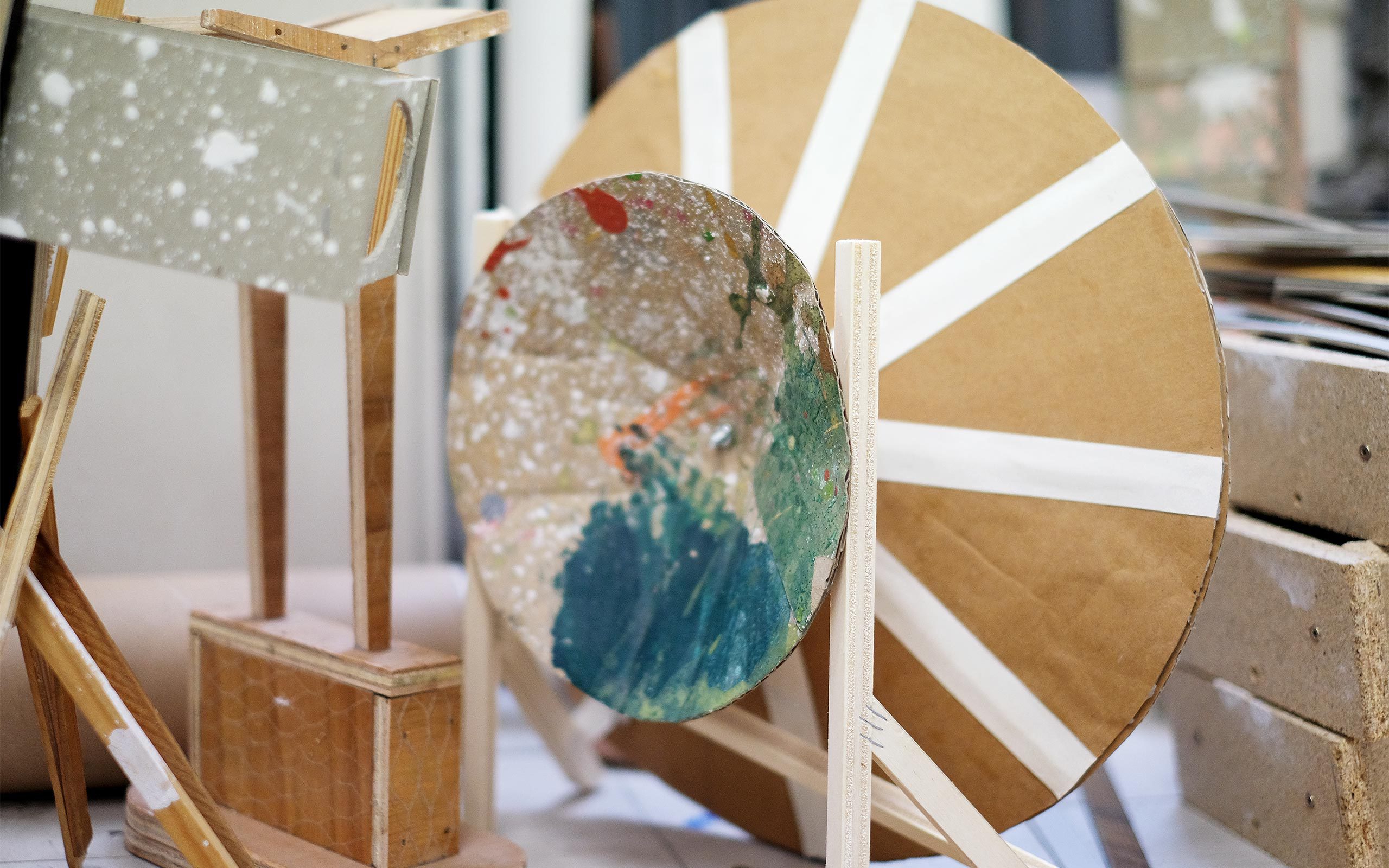
How did you experience your study in Gunter Damisch’s class?
That was from 1993 until 1999: a completely different time. At the time, the Academy was completely square/boringly traditional. There weren’t even studios at the Semper depot, but only the venerable building at Schillerplatz, which smelled of oil paint. Hundertwasser and Arik Brauer were professors there. Gunter Damisch but mainly Renée Green were the first to bring something completely new. I always had my own studio and actually was not that much at the university. In retrospect I could have probably gotten out a bit more. It actually started for me after that. I had studied painting and graphics and transferred to the three-dimensional only after completing my degree.
That's a huge reorientation. What triggered this change of direction?
At some point I realized that my concept of painting and being an artist was at odds with my personality, and that consideration of the three-dimensional and of content holds more meaning to me than sitting before a white canvas. I don’t consider myself a very good painter in the traditional sense, I imagined myself in that role, but found that it was just not me. If I paint today or deal with the topic of painting it always means for me to compose an image and typically implies a sculptural quality when implementing the work.
How do you see the development of the art scene and the art market in Vienna?
A lot has changed here in the last ten, twenty years. Berlin used to be the place to be. Now it seems to me to be the other way around round and Berliners come to Vienna. And it is noticeable that the well-established gallery concepts no longer function as they did a few years ago. Some only have small rooms and participate mostly in art fairs. Others say, they focus more on their location and participate less in fairs. The money is now distributed strangely: It is easier to sell a Damien Hirst for two Million Euros than sculptures of semi-known artists for around 10,000 Euros. It all comes down to the winners and for the big crowd it gets harder. In truth, many artists fight over very little money.
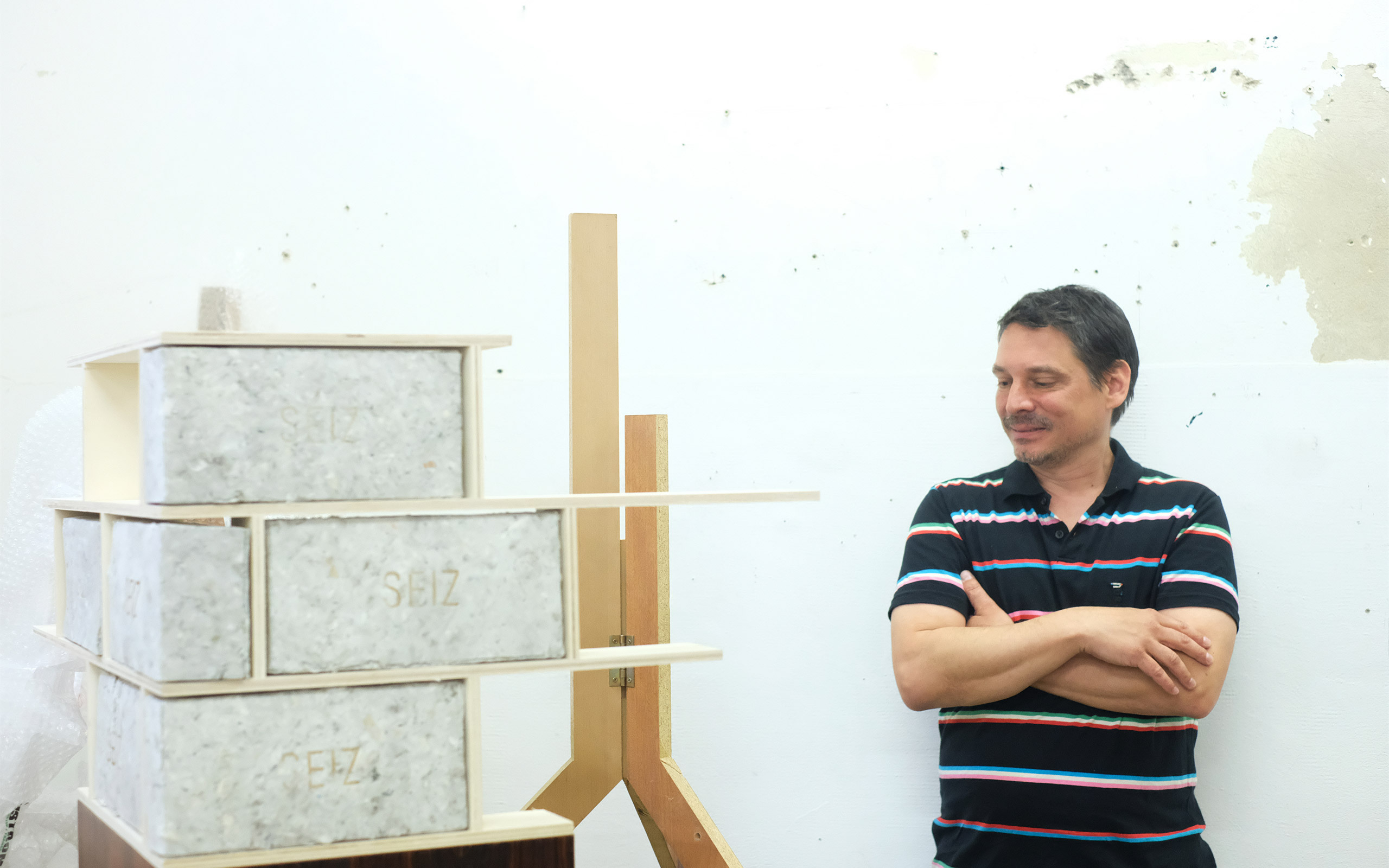
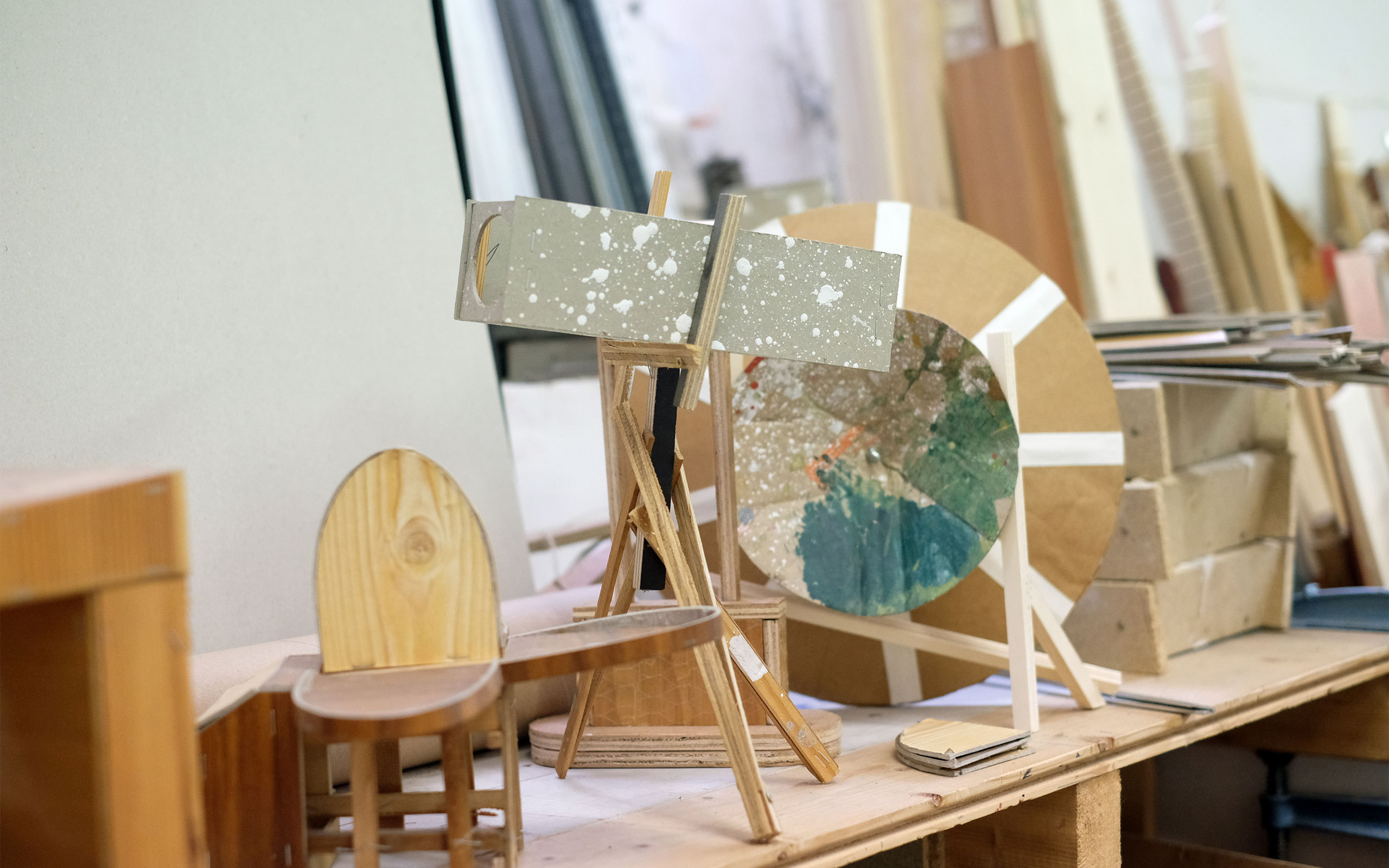
Do you have the impression that this is also a question of cultural policy? The question of how society as a whole, deals with art is repeatedly and vehemently discussed.
Should a society afford culture by means of institutional support mechanisms? Or should the private sector take over? I do not know what the better option is, probably a combination of the two. However, the concept that the large, established galleries support the smaller ones is an important one. The smaller galleries build up artists who at some point transfer to the bigger galleries. But if the smaller galleries have no money, where is the artistic capital going to come from? It might be an interesting approach, if the established galleries that make mind-boggling sales would pay fair fees to the smaller, young galleries to keep production running. One also has to acknowledge the consequences for those who barely subsist. Otherwise, at some point there will remain only five galleries that supply art fairs and that would be quite boring.
Do you have role models that have substantially impressed and influenced you?
When I was young I had more role models in music than in art. Now I admire people like Jiří Kovanda. He has always worked with the means that were available, he has done his thing although he was not very successful at the – of course also because of the Iron Curtain. I am just very impressed when someone perseveres, even if it doesn’t go well for him.
What are your next steps? What are you working on?
I am just about to transfer the potlatch into the three-dimensional. But I cannot and do not want to say much at the moment because it's still very much in the making. There are already approaches, but I do not know if they are technically feasible. Anyway, I will completely restructure my storage. This will then result in new work.
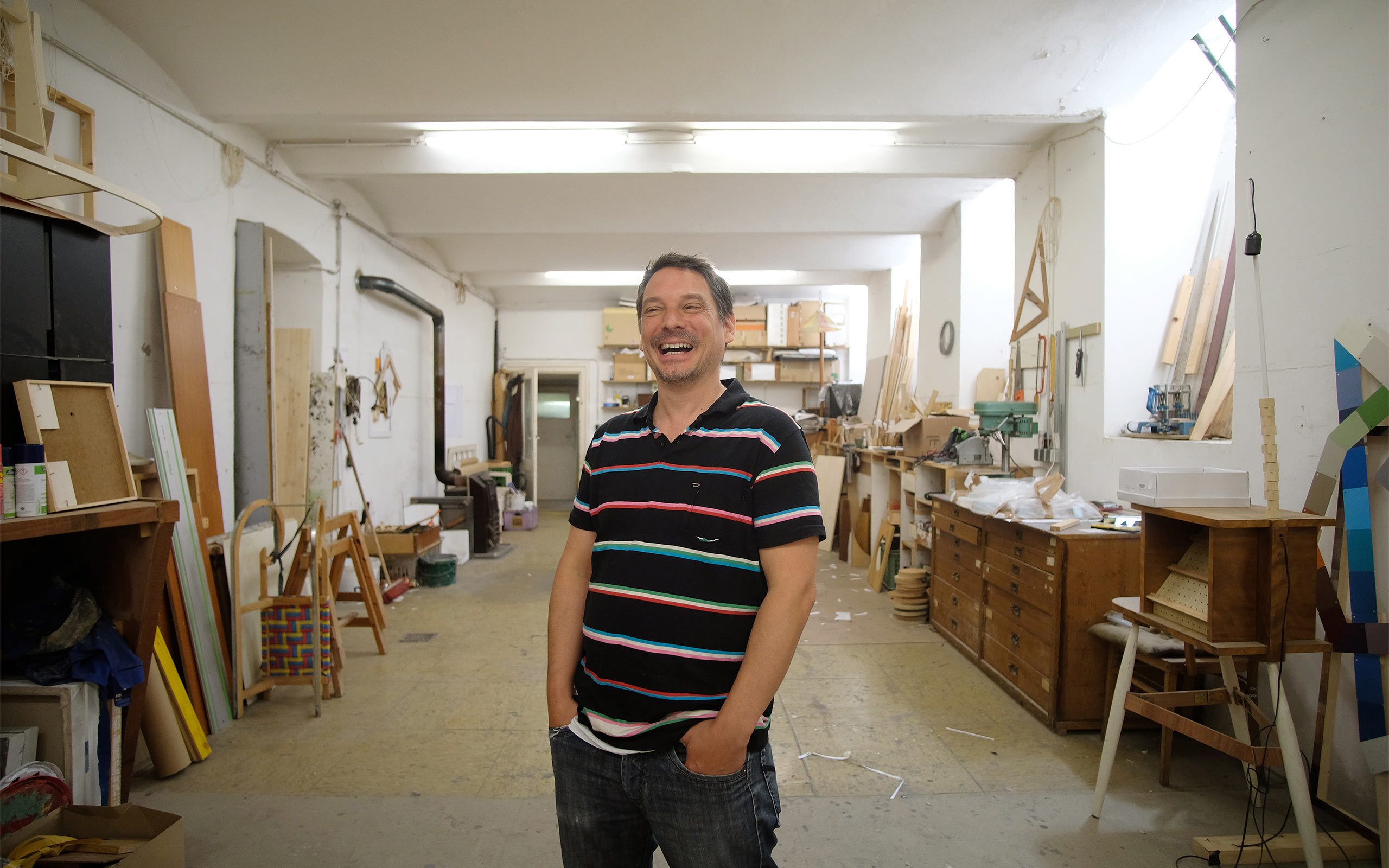
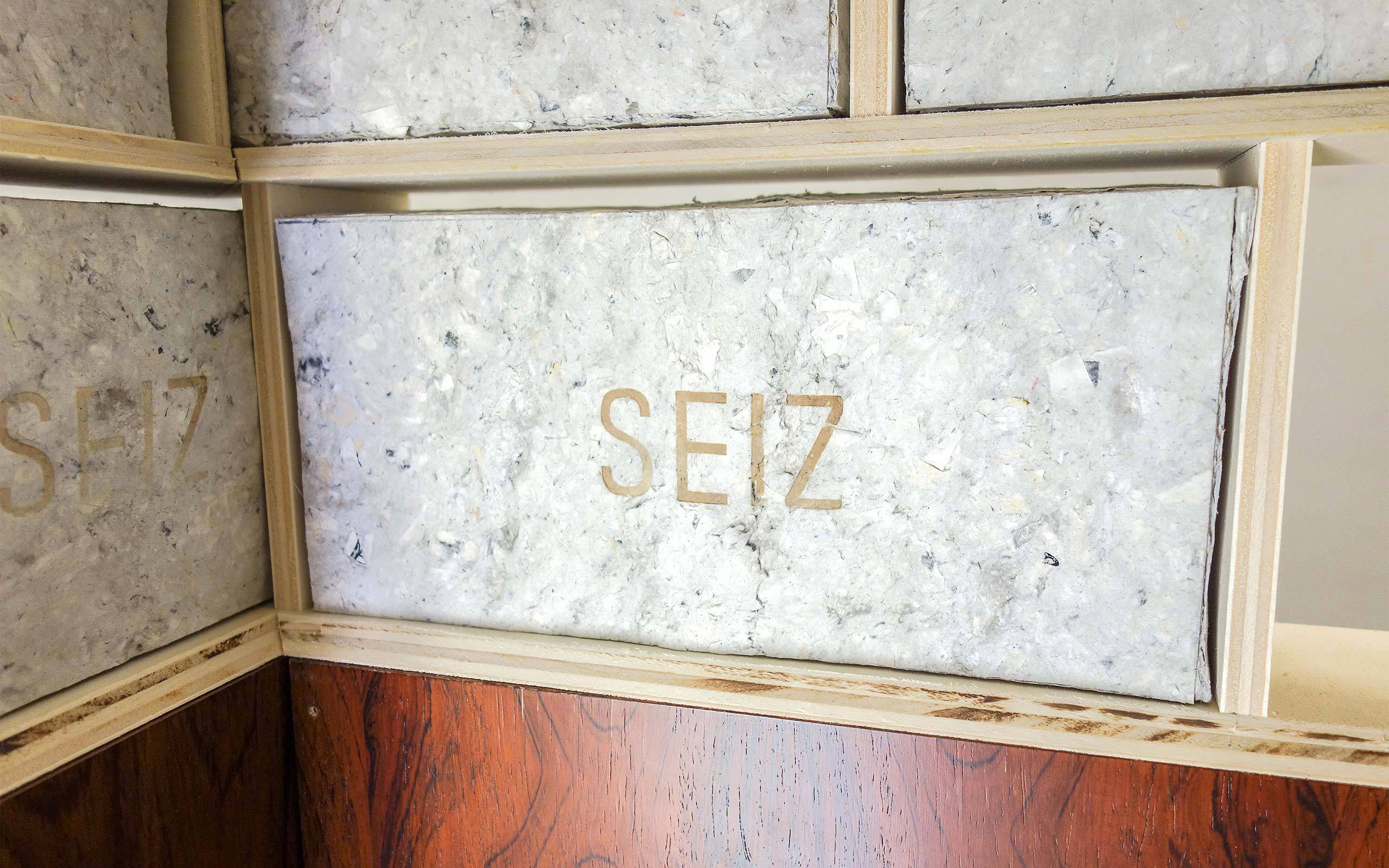
Fabian Seiz, Fecit, Photo: Lene Greif/unttld contemporary
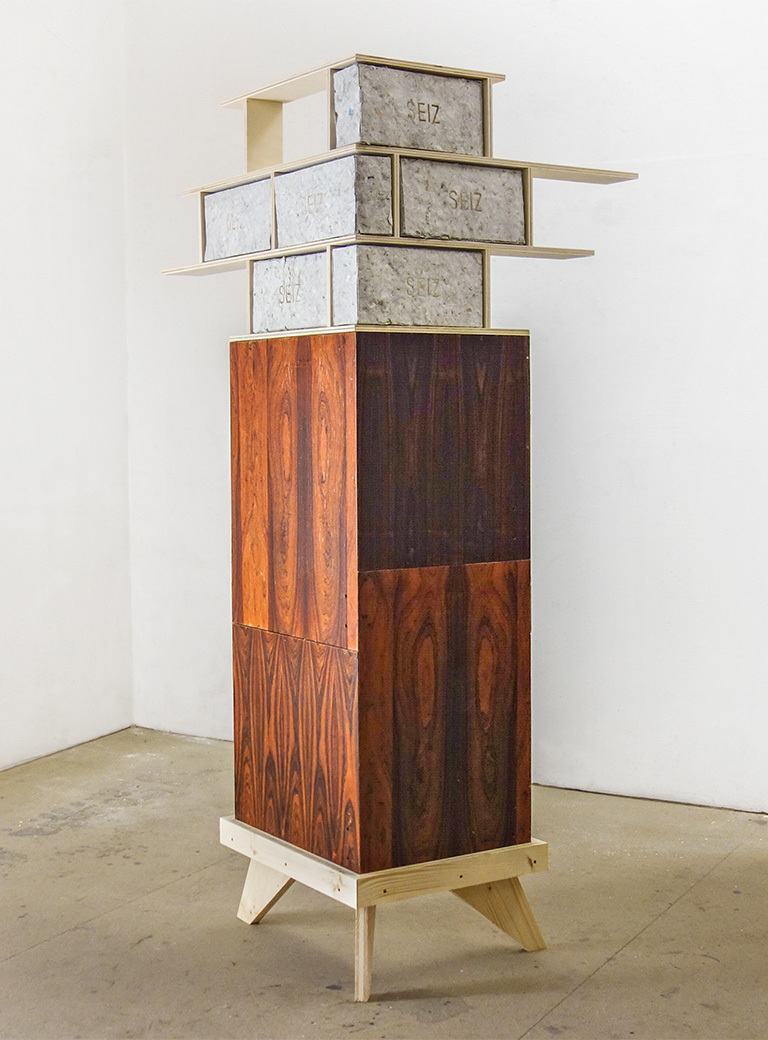
Fabian Seiz, Fecit, Photo: Lene Greif/unttld contemporary
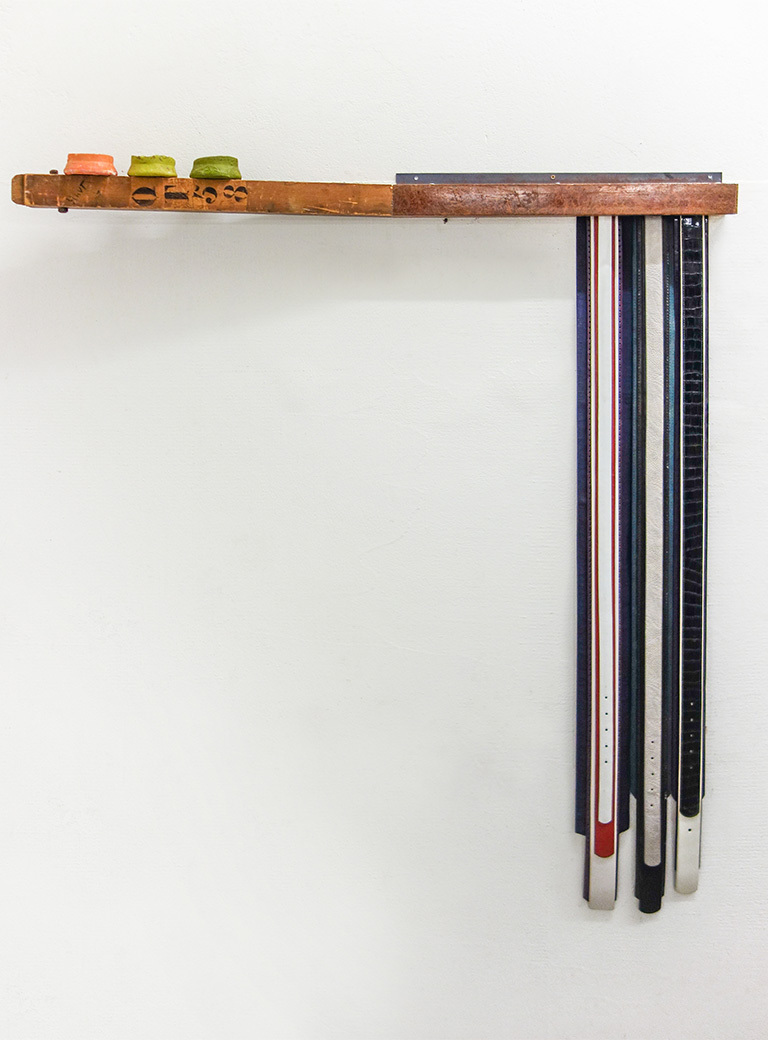
Fabian Seiz, Nippeshalter, Photo: Lene Greif/unttld contemporary
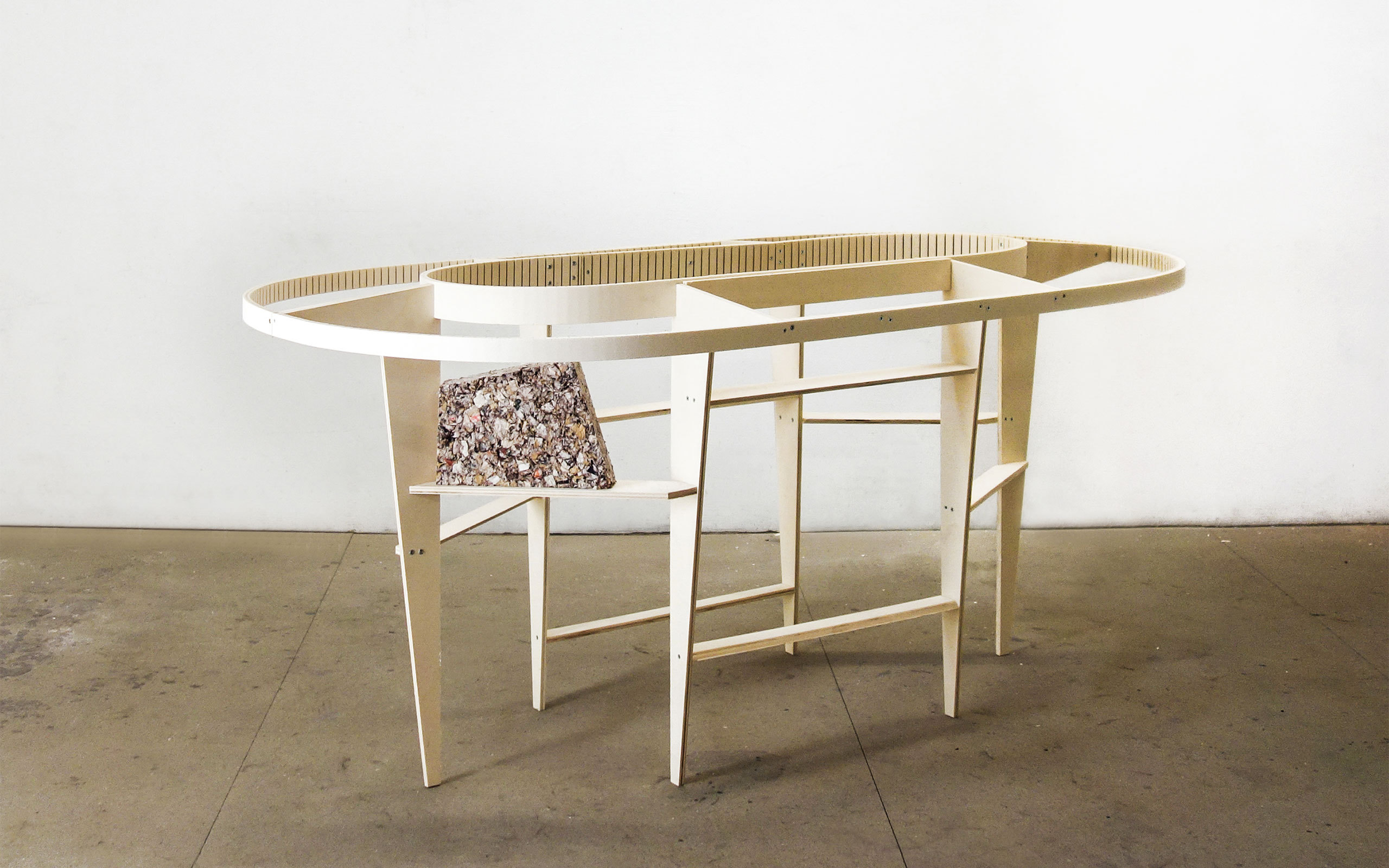
Fabian Seiz, Verhandlungstisch, Photo: Lene Greif/unttld contemporary
Interview: Gabriel Roland
Photos: Maximilian Pramatarov


